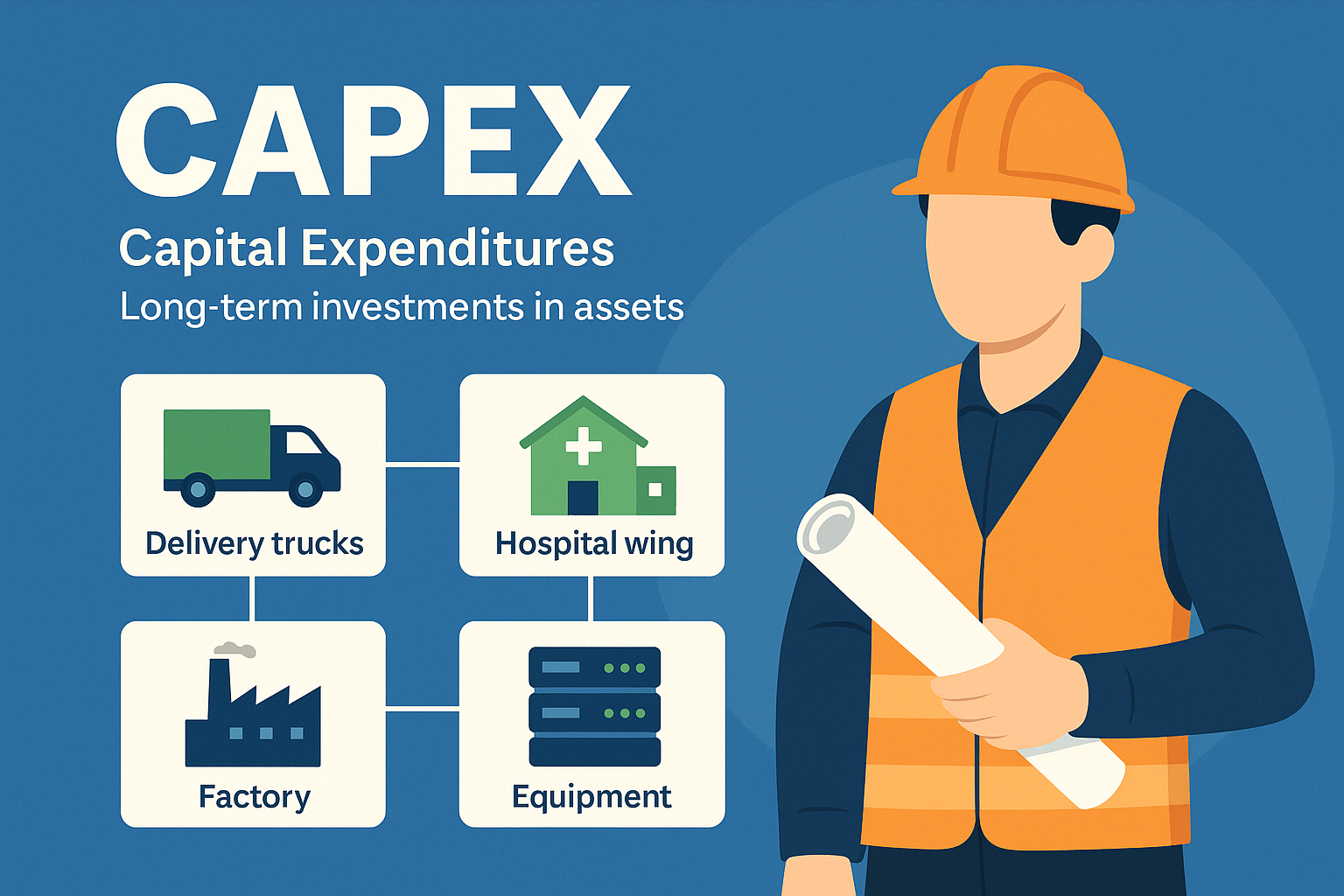Capex

Capital Expenditures (CAPEX) refer to the investments made using funds by a business or government to acquire, upgrade, and maintain physical or intangible assets such as buildings, technology, or equipment. These funds are used for purchases that provide value over time, not just immediate benefits. CAPEX is capitalized, meaning its cost is spread over the useful life of the asset.
Think of CAPEX as a long-term investment in the future of a business or country. If a company buys a new machine, builds a factory, or upgrades its technology, it’s spending CAPEX. These are big-ticket items that help generate income for years to come.
Why It Matters:
- It’s not about day-to-day spending but about preparing for tomorrow.
- CAPEX shows where a company is heading—growth, efficiency, innovation.
Common Examples:
- Buying delivery trucks for a logistics company
- Setting up a new hospital wing
- Upgrading servers for faster data handling
Applications and Use Cases
Business Growth
CAPEX helps businesses expand by adding capacity or entering new markets. For example:
- A clothing brand opening new stores
- A steel company setting up another blast furnace
Operational Efficiency
Used to improve how things are done:
- Buying energy-efficient equipment to cut electricity bills
- Automating a warehouse to reduce manual labor
Compliance and Safety
Helps meet legal and safety standards:
- Air pollution control units in factories
- Fire safety systems in office buildings
Public Infrastructure
Governments use CAPEX for:
- Building roads, airports, and dams
- Expanding school and hospital facilities
Historical & Evolution
How It All Started
Even ancient civilizations invested in long-term assets—think Roman roads or Egyptian granaries. These were early forms of CAPEX: one-time big investments that provided long-term benefits.
The Industrial Era
With factories and railroads came the need to spend on machines, transport, and production facilities. Businesses had to start tracking large investments separately from daily expenses.
Modern Day
By the 20th century, accounting bodies like FASB and IASB set formal rules on how to treat CAPEX. Now, CAPEX is a key part of financial planning, budgeting, and investor strategy.
In the Digital Age
Today’s CAPEX includes:
- Cloud infrastructure
- R&D for new technologies
- Renewable energy projects
5. CAPEX vs OPEX



